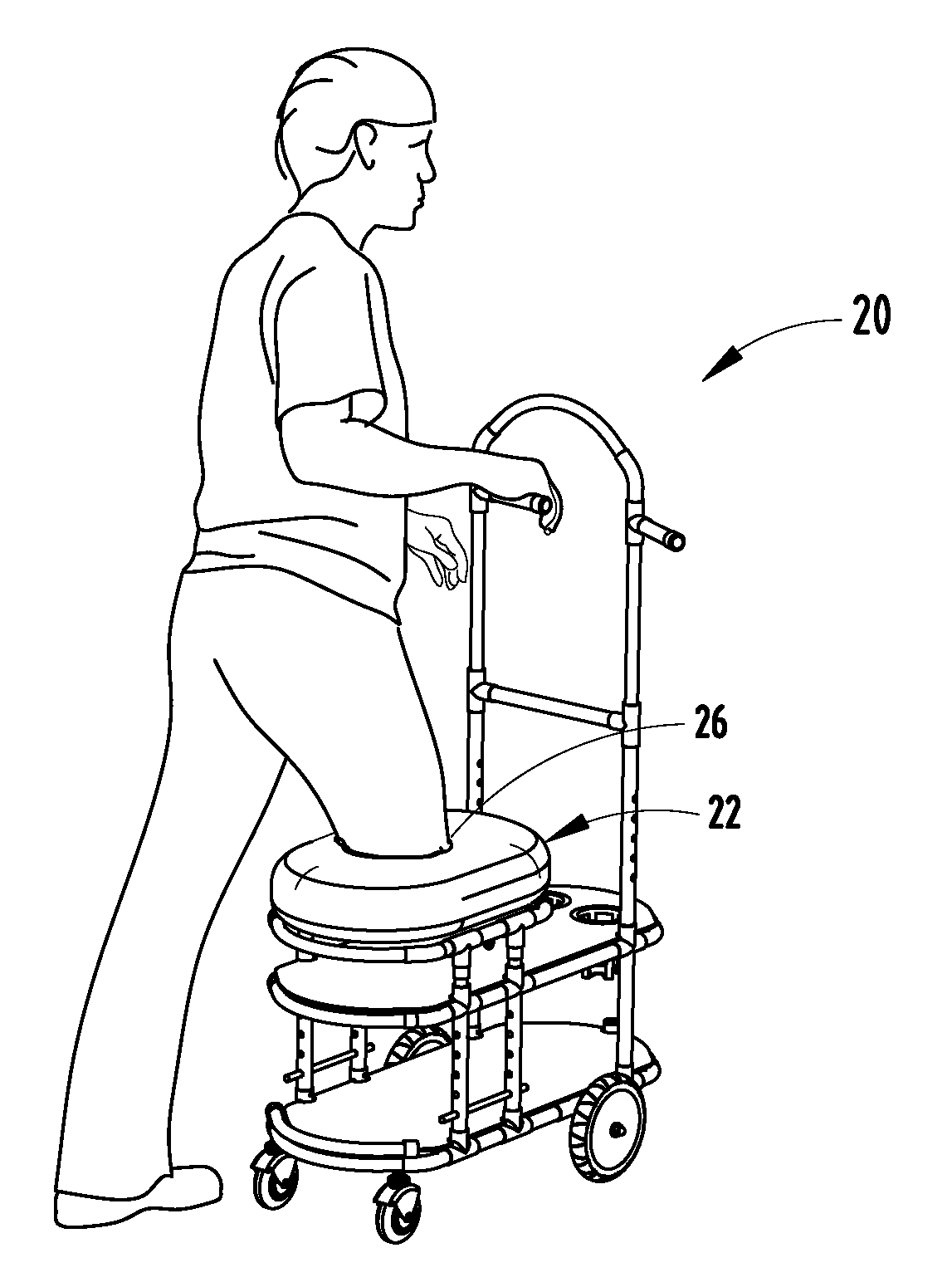Mobility device for amputee and leg-injured persons
a technology for amputees and people with leg, ankle, foot injuries, applied in the direction of wheelchairs/patient conveyances, bicycles, trailer steering, etc., can solve the problems of inability to adjust, increase etc., to achieve the effect of reducing the cost of mobility devices
- Summary
- Abstract
- Description
- Claims
- Application Information
AI Technical Summary
Benefits of technology
Problems solved by technology
Method used
Image
Examples
Embodiment Construction
[0034]An amputee mobility device 20 (FIG. 1) includes a wheeled frame 21 (FIGS. 1-2), and apertured seat 22 (also called “cushioned structural member” and “horizontal structural support member”) with a pocket 23 (also called “basket”) suitable for directly receiving the stump (i.e., amputated leg) of an amputee, such that an amputee can simply place their stump in position and move with stability across a floor. The basket 23 can be custom-made for an individual, such as by molding or sewn fabric, or can be made adjustable such as by using hook-and-loop material (i.e., Velcro®). The present device is particularly useful since, for example, amputees prefer not to struggle to attach a prosthesis when their goal is simply to move a short distance. On the other hand, it is potentially quite unsafe for an amputee with one leg to hop across a room, whether they use an assistance device or not.
[0035]The illustrated frame 21 includes upper and lower loop-shaped subframes 28 and 29 supported...
PUM
 Login to View More
Login to View More Abstract
Description
Claims
Application Information
 Login to View More
Login to View More - R&D
- Intellectual Property
- Life Sciences
- Materials
- Tech Scout
- Unparalleled Data Quality
- Higher Quality Content
- 60% Fewer Hallucinations
Browse by: Latest US Patents, China's latest patents, Technical Efficacy Thesaurus, Application Domain, Technology Topic, Popular Technical Reports.
© 2025 PatSnap. All rights reserved.Legal|Privacy policy|Modern Slavery Act Transparency Statement|Sitemap|About US| Contact US: help@patsnap.com



